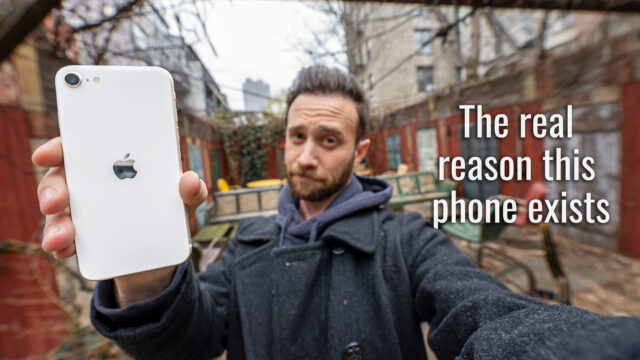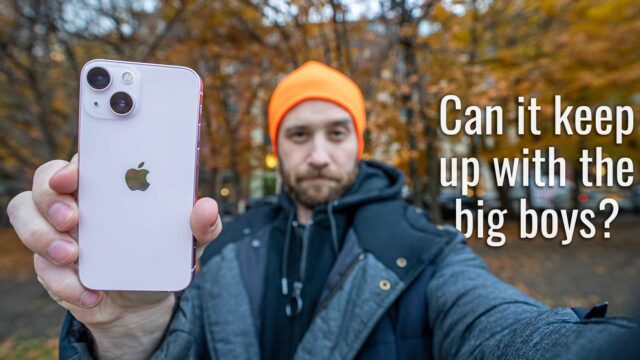iPhone XR Complete Walkthrough: The Best iPhone for the Money
In a strange move, Apple launched two phones and then a third, budget-friendly phone, one a month later (although maybe not that strange after the iPhone X launch last year, I guess). And while I did my complete walkthroughs already on the iPhone XS and the XS Max, the new iPhone XR was just released today and so I figured I’d try and get a complete walkthrough done on that for you guys as well.
If you aren’t familiar a complete walkthrough on the channel is where I go through as many things on a device as I can so you guys know as much as possible about it and are better prepared should you be thinking about buying one.
Design
With that said, there’s a lot to go through on this really intriguing new iPhone model (I’ll explain more on why it is in a bit) but, for now, let’s get started with the design.
The iPhone XR is made out of a glass on the front and back with an aluminum frame compared to the stainless steel of the XS and XS Max.

On the left, we have our volume buttons and out notification toggle that can be used to turn off the ringer.
On the right, we have our power button and our SIM card slot. You can fit a nano SIM in this slot but the iPhone also supports eSIM which is a virtual SIM you can call your carrier to activate (if they support them) instead of needing a physical SIM card. You can also tap and hold the power button to get Siri to listen to you, as well.
At the top, we have nothing.
On the bottom, we have our speaker grills and the lightning port capable of fast charging with a fast charger (sold separately) that’ll get the phone from 0-50% in about 30 mins.
On the front, we have our 6.1″ 19.5:9 aspect ratio 828×1792 pixel resolution LCD that Apple is calling their Liquid LCD which lets them get the screen closer to the edges of the display. This size fits squarely between the XS and the XS Max both of which have AMOLED screens and high resolutions.
Above that screen, we have the same Face ID setup as we do on the XS and the XS Max with the dot projector, flood, IR camera, and front-facing 7MP f2.2 32mm equivalent camera, etc. This means you can take the same selfies you can on the XS and XS Max, including portrait mode with the various 3D lighting effects, and you can use Face ID to unlock the device with your face.
Because of all this, you’d have a hard time telling it apart from an XS from the front at a quick glance. We’ve even removed the home button and bottom bezel so you’ll be using the same gesture-based system the X, XS, and XS Max all use.
Closer inspection and you might be able to tell the difference in the resolution, LCD vs AMOLED, and I swore there are slightly bigger bezels but when I put them side by side if they are, it’s only slightly.
One of the other things that separate the look from the other two iPhones launched this year is the fact that, just like the 5C from a while ago, Apple is releasing the XR in a few different color options.
We have blue, white, black, yellow, coral and red (from Product RED the charity).
Weight wise, it weighs a bit more than the XS for some reason by about 20 grams and less than the XS Max by about 15 or so.
It’s IP67 certified so it can handle 1 meter of ware for up to 30 mins (compared to the IP68 of the XS and XS Max which can do 2 meters for 30 mins).
For storage, we have the option of 64/128/256GBs.
It’s being powered by the Apple Bionic A12 chipset, the same as the other two devices, but only has 3GBs of RAM compared to the 4 of the XS and XS Max.
We have 802.11ac, Bluetooth 5.0, Gigabit LTE, and a 2942mah battery (compared to the 2658mah of the XS and 3174 of the XS Max). Because of this, it’s rated to last as long as the Max.
And finally, we have Qi charging as we do with all the newer iPhones, as well.
Software
For software, we’re running iOS 12 which you are probably familiar with if you’re watching this, but just in case, let’s run through some of it really fast.
First, we have the new gesture system I mentioned. You can swipe up to go home, swipe up and hold to get to multitasking, swipe along the bottom to move between recent apps, pull down on the top right of the screen (in between the notch and the right edge) to get your control center, and pull down from anywhere else on the top to get to your notifications.
You can also swipe to the right to get to all of your apps and swipe all the way to the left to get to your widgets which you can tap edit at the bottom of to customize which show up here as well as in what order.
We also do not have 3D touch on the XR like we do the other iPhones so instead, you have to simply tap and hold. It’s not a big deal and only really stops you from doing quick actions on app icons as far as I’ve noticed so far (since a tap and hold puts the screen into edit more normally).
The apps that Apple includes automatically, really fast, are:
- Facetime
- Photos
- Clock
- Maps
- Weather
- Calendar
- Notes
- Reminders
- Apple News
- Stocks
- iTunes Store
- App Store
- Books
- Health
- Home Kit
- Wallet
- Tips
- Podcasts
- Find My iPhone
- Find My Friends
- Contacts
- Files
- Watch
- Voice Memos
- Compass
- Measure
- Calculator
- Clips
- iMovie
- iTunes U
- TV
- Safari
- Phone
- Messages
- Music
- Sheets
- Pages
- Keynote
- GarageBand
Camera
Which brings us to the camera. Now, this is particularly interesting to me about the XR. It has the exact same main camera as the XS and XS Max. So we have a 12MP f1.8 26mm equivelant focal length camera with 1.4 micro-sized pixels.
We have our Quad LED, dual-tone flash, Phase Detection Auto Focus, optical stabilization and we even have the Smart HDR feature that Apple has put in all the newer iPhones that make for pretty awesome shots in difficult lighting situations.
The only thing missing, is the 2x telephoto camera. But, without it, you can still do portrait mode on the rear camera using some software trickery. The only catch here is that it requires a person to be visible in the frame (unlike the XS and XS Max you could use portrait mode on any object, as well as people). Most likely this is because the algorithms are tuned to people and not every object and Apple might not have wanted to put it in here without the extra depth data from the telephoto.
One nice thing about that is that that means, that when you do take a portrait mode photo of a person at least, you can get closer to them it doesn’t switch to the more zoomed in telephoto like the others. And, I have to admit, it does a good job still.
Diving into the camera itself further, we have the following modes:
- Flash
- Live Photos
- Timer
- Filters
- Timelapse
- Slow-mo
- Video
- Photo
- Portrait
- Square
- Panorama
And in the camera settings:
- Preserve Settings
- Grid
- Scan QR Codes
- Record Video
- Record Slow-Mo
- Record Stereo Sound
- Formats
- Smart HDR
- Keep Normal Photo
Check out more photos from the phone, no edits, here (please ignore the large amount of selfies of SuperSaf, he stole the phone from me and that’s just what happens when he has a phone):
Conclusion
That’s it. For more photos and videos from the latest devices and behind the scenes at events, follow me on Instagram, Facebook, and Twitter. Let me know what you guys think of this walkthrough on the iPhone XR in the comments below (should I remove stuff, add stuff, etc.) and let me know what you think of the phone itself, as well. As always, thanks for reading!
































